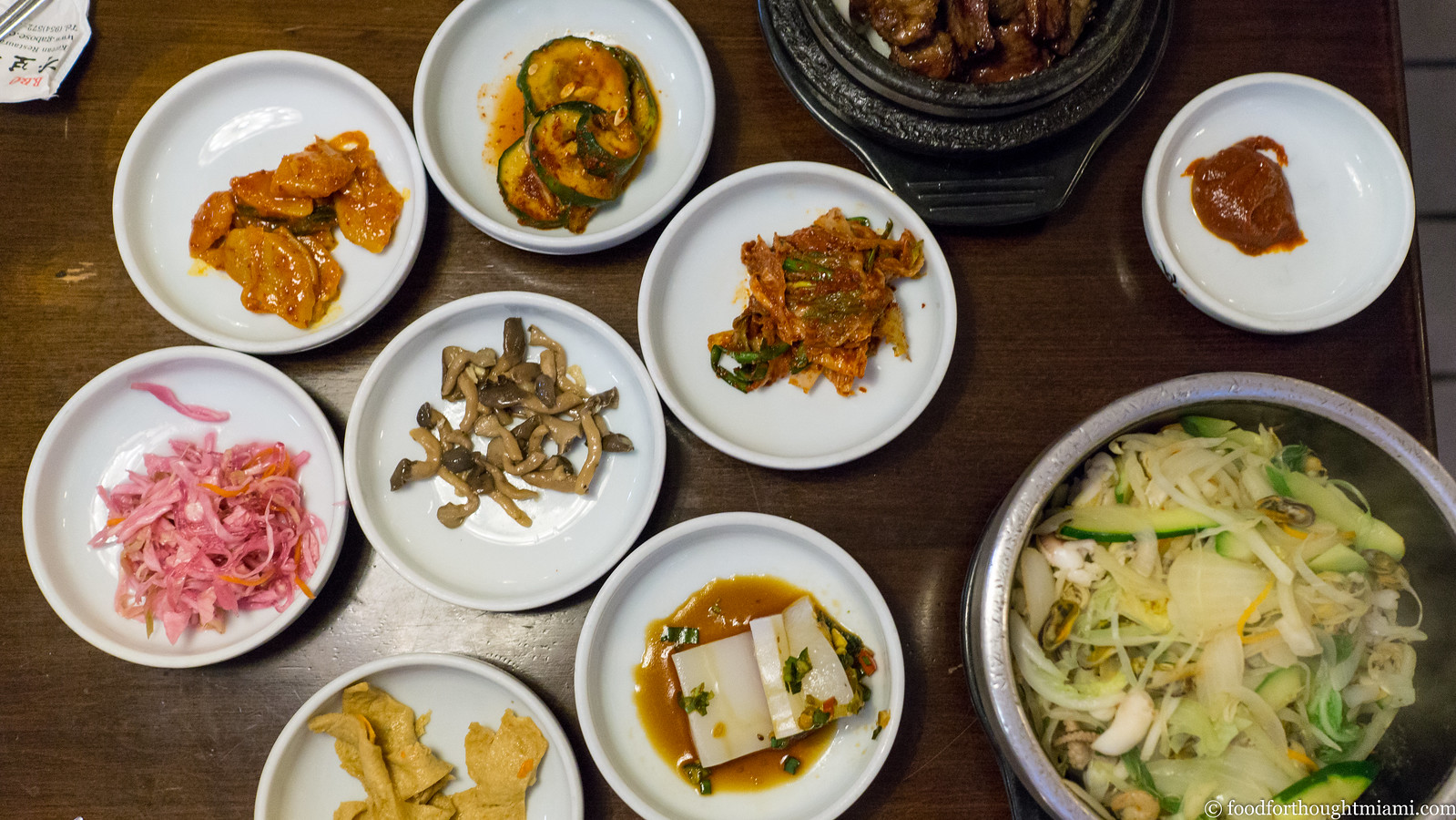It is not often that I am at a loss for what to have for dinner. Yet I found myself driving home from work this evening, knowing there was not much in the fridge to cook (yes, there are some pig trotters, but that's more of a project than a quick Tuesday night meal), pondering: "What's for dinner tonight?" Fortunately an idea occurred to me before I made it home to the near-empty fridge:
Sakaya Kitchen, one of several new places that have recently opened in the
Midtown Shops. (While the
Five Guys next door has been open for some time, the
Cheese Course and
Sugarcane Raw Bar have finally come online after extended waits, and
Mercadito is supposedly close).
Sakaya's setup looks like a fast food place, with a mostly open kitchen fronted by a long counter that has room for multiple cash registers (a sign either of unbridled optimism, or of a space that was originally built out for another tenant). But there aren't many fast food places where the menu is scrawled out daily on a chalkboard, where almost all the menu's components are made in-house, or where the menu brags about all-natural meats, organic dairy, and fresh produce. You may order at a counter, but this is real food.
When I visited, there were about a dozen items on the menu, plus a few things available by the piece or as side orders. The list is a bit of a pan-Asian hodgepodge with something of a Korean focus, playing in particular on flavors and dishes that David Chang has recently made ever so popular through his
Momofuku empire - pork buns, Korean stye chicken wings, noodles with ginger scallion sauce. Which just happened to be what I ordered.
The pork buns were the standout of the group, 2 puffy clamshell buns filled with tender, meaty slabs of pork
belly butt that had been slow-cooked for eight hours. The richness was cut by some thin-sliced cucumber pickles stuffed into the buns, along with a generous dollop of a sweet-ish ssamjang (Korean chile sauce). If I could have had my druthers, I would have taken the sticky-sweet-spicy sauce for the pork in a more spicy, less sweet direction, but these were some fine bites.
The Korean chicken wings can be had either by the piece ($4.69 for 6, $8.99 for 12, $14.99 for 20) or as a "combo" of six wings with jasmine rice, kimchi and more of those cucumber pickles ($7.45). The wings had been given a good long bath in a marinade redolent with kochujang (Korean chile paste), the flavor of which was infused throughout. It would be unfair of me to address the crispiness of the wings, as they had to travel 10 minutes in their take-out containers before I got home. I liked the rice, which was moist and just a bit pleasantly sticky, and generously sprinkled with fresh slivers of green onion. I also really liked their kimchi, which had a nice hint of that distinctive fermented, lactic tang.
The noodles, which came with cubed tofu and green beans, were a generous portion, but could have used a much more generous dollop of ginger-scallion sauce to perk them up. The green beans themselves also hadn't been seasoned and wanted some salt. With some minor tweaking I'm sure this could be a fine dish too.
Other items that intrigued included Angus beef bulgogi lettuce wraps, kimchi egg rolls (rolled fresh in house daily), and the promise of a "dim ssam" brunch menu coming soon. There's also about a half dozen sakes available by the bottle as well as a decent selection of Japanese beers.
Sakaya has only been open about a month and I'm sure is still tweaking the recipes and the menu. (My hope is that they turn up the bright spicy flavors even more. "Fortune favors the bold.") But even now it delivers good food at a good price that you can feel good about eating. Plus, it's conveniently located between my office and my house.
Sakaya Kitchen
Buena Vista Avenue btwn 34th & 36th Streets
Miami, FL 33127
305.576.9096














